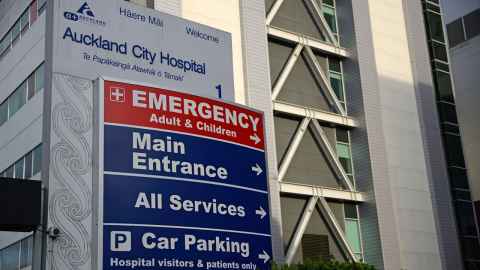Health review leaves Pasifika out in the cold
23 June 2020
Opinion: Failure to address needs of Pacific people in the health and disability sector review is the final report's most important omission, writes Collin Tukuitonga.

Pacific health care providers are universal in their disappointment at the lack of attention on the needs of Pacific people in the final report from the Simpson Health and Disability System Review.
It is well known that Pacific people have high health needs, often unmet, leading to high rates of avoidable admissions and poor outcomes. Failure to address these needs in the final report is the most important omission in what is the first comprehensive plan for the reform of the New Zealand health system in several decades.
The review is a welcome critical analysis and reflection of the health system. It includes several proposals that would strengthen the New Zealand health system, including a focus on improving population health and well-being, strong focus on improving Māori health, the establishment of Health NZ to focus on operational issues separate from the stewardship role of the Ministry of Health, and a progressive reduction in the number of District Health Boards.
If the recommendations are implemented, it could lead the biggest transformation of the New Zealand health system since the establishment of the District Health Boards in 2001. Much depends on how much of the recommendations are implemented.
Overall, it appears that the planned change is largely an exercise in anatomical realignment or structural change. There is less emphasis on the physiology of the system, for example: addressing the culture of health and healthcare delivery, sociocultural context for care delivery in New Zealand and institutional bias and racism.
Pacific people have a long history of poor access to healthcare despite various efforts to address the health inequities that exist. In the re-design of the health and disability system, it is important that access to and quality of health care services for Pacific people is improved. This will require active participation of Pacific people at the governance, leadership, management and delivery of health and disability services.
The review dedicates considerable attention to measures to improve Māori health. The establishment of the Māori Health Authority is a potential game changer, but it must have the authority and resources to make the hard decisions needed to make improvements. It is important for the MHA to have real influence in setting priorities, funding and commissioning services as well as the ability to call providers to account.
A focus on population health and well-being recognises the current problems associated with chronic under-investment in this area. The plan proposes the return of health promotion and health protection services to the Ministry of Health, including the disestablishment of the Health Promotion Agency. Funding for population health will be devolved to DHBs. With the planned reduction in the number of DHBs, one assumes that the number of Public Health Units will be reduced. The problems experienced by PHUs during the Covid-19 pandemic suggests that better coordination is needed.
A Public Health Advisory Committee is proposed. It is not a new idea but if it is well-resourced and supported, it can provide the strategic direction and agree national priorities for population health improvements for the nation.
The planned progressive reduction in the number of DHBs is welcome. If adopted, it will reduce duplication, improve coordination and save money. Appointing all board members will ensure consistency in the selection of individuals who govern entities that deliver services in the community. The establishment of Health NZ will provide the overview needed across the DHB landscape and improve coordination between them. Health NZ will also have the responsibility for the finances of the DHBs. DHB deficits have long been a major problem needing clear direction and management.
System changes recommended for Tier 1 services are designed to improve planning, funding and contracting for the range of services and activities that take place in communities to allow for more flexible models of care. Tier 1 services include primary health care including general practice and community health services.
Tier 2 services includes the establishment of hospital networks, clinical networks, and role delineation frameworks. These should be supported by regional plans and district plans, which align to the national plans. The NZ Health Plan provides the general direction for regional plans.
Improving the coordination between Tier 1 and Tier 2 services has the potential to reduce high avoidable hospitalisation rates, reduce unplanned hospital returns and high use of emergency hospital departments for primary care needs among Pacific people.
It is important that the recommendations are implemented. New Zealand has a history of developing elaborate plans that are not implemented. If the major components of the review are implemented, it could transform our health system into one better able to address the long-term challenges such as reducing inequities, improve coordination, reduce inefficiencies and improve outcomes for all New Zealanders. And that must include Pacific people.
Dr Collin Tukuitonga is Associate Dean Pacific at the Faculty of Medical and Health Sciences.
This article reflects the opinion of the author and not necessarily the views of the University of Auckland.
Used with permission from Newsroom Health review leaves Pasifika out in the cold 23 June 2020.
Media queries
Alison Sims | Research Communications Editor
DDI 09 923 4953
Mob 021 249 0089
Email alison.sims@auckland.ac.nz